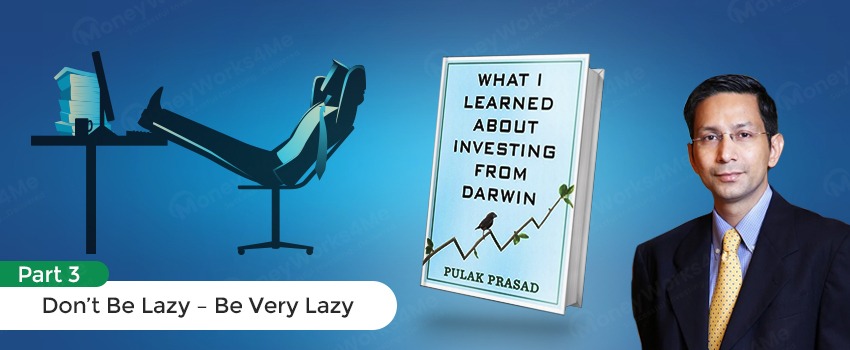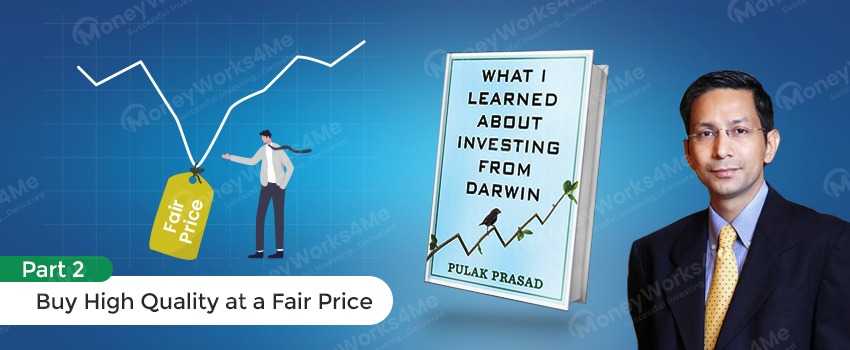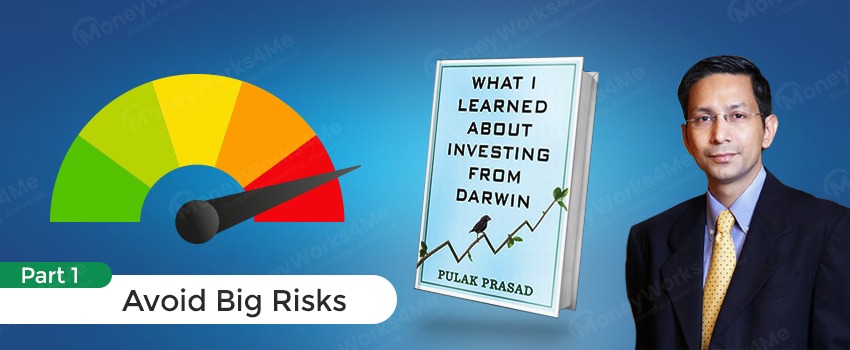This gem of a book written by Pat Dorsey, Director of Stock Analysis at Morningstar has a highly deceptive title, as this book is much more than just those 5 rules. Those 5 rules just serve as building blocks in his endeavour to explain to us how great companies are built & run, and how an ordinary person can also identify such companies just by doing a little bit of research.
Pat begins gently by laying out the 5 rules of stock investing: Do your homework; find economic moats or safety nets; have a margin of safety; hold for the long haul, and know when to sell. Every budding analyst claims to incorporate at least one of these rules in his quest to find quality companies at reasonable prices. Gradually, he dives deeper into each individual rule and gives us the nitty gritties in simple, straightforward language:-
- Do Your Homework: This refers to the framework of investment knowledge required to analyse a business. This essentially includes knowledge of finance and investment accounting. Chapters 4-7 explain how to analyse companies.
- Find Economic Moats: This is the most important part of the book. Dorsey suggests looking at quantitative factors like free cash flows, net margins and return on equity and return on assets, as a first step. The second step would be to try to find qualitative factors behind the numbers that create the moat, such as brands, technology, switching costs, or low cost of operations.
- Have a Margin of Safety: Even the world’s most wonderful business is a poor investment if purchased for too high a price. The book takes the reader through all the conventional measures of market valuation such as prices to sales, earnings and book value, earnings yield and price to earnings growth, etc. It ends with a little-known measure—cash return—which is free cash flow to enterprise value and measures how efficiently the business is using its capital. A whole chapter is devoted to intrinsic value by the discounted cash flow method.
- Hold for the Long Haul: This is a very important rule to follow as taxes and trading costs can eat into a large part of your profits. Investors generally panic when the stock price falls by 10-20% and sell the stock thus realizing a loss. However, one should dig deep and try to find the reason behind the decline and if it seems like a temporary hiccup, one should add more instead of selling it.
- Know When To Sell: He explains that knowing when to sell the stock is at least as important as knowing when to buy the stock. He reiterates that rather than tracking the stock, whether it has fallen or risen or going sideways, one should focus on the company, and keep an eye out on the news and material events surrounding the company. He gives a list of questions to ask ourselves before we make the selling decision- 1) Did you make a mistake while buying the stock? i.e. is there some important piece of information that you missed or something that you misinterpreted?? 2) Have the fundamentals deteriorated over time? 3) Has the stock risen too far above its intrinsic value? 4) Do you have too much of your portfolio concentrated in 1 stock? 5) Is there something better you can do with your money?
After explaining these five points, about halfway through the book, Dorsey takes the readers through how to analyse two real companies. He picks up Advanced Micro Devices, a tech company, and Biomet, a maker of medical devices. This chapter gives readers a chance to put on an analyst’s cap.
Dorsey dedicates an entire chapter to reading financial statements, offering insider’s tricks to get at the numbers that really count.
In a discussion of intangible assets, for example, Dorsey cautions the reader to pay close attention to goodwill, or the value of an asset — usually an acquired one — over and above its book value. Dorsey writes that “most companies tend to overpay” for acquisitions, “which means the value of goodwill that shows up on the balance sheet is very often far more than the asset is actually worth.”
He cites the acquisition of America Online by Time Warner in 2000. A year later, the combined company reduced the value of goodwill on its balance sheet by “an amazing 40 percent with the stroke of a pen, essentially admitting that it had far overpaid” in the merger. Any investor who had been counting on AOL’s originally stated goodwill as an asset, Dorsey writes, would have been “sorely disappointed.”
Dorsey offers pages of explanation and anecdotes designed to help readers follow the five rules he has laid out. For investors looking for empowerment, Dorsey’s musings on how to nail companies that engage in “financial flakery” via creative accounting or that overcompensate their executives at the expense of their shareholders make this book worth its price.
In addition to coaching readers on how to analyze a company’s finances as well as its management, Dorsey also offers advice on how to value a stock — a critical component that too many investors choose to leave solely in the hands of the financial industry without doing their own due diligence.
As Dorsey writes: “If the investment process were as simple as identifying great companies with shareholder-friendly management teams and wide economic moats, we’d be finished — and investing would be much easier. But even the most wonderful business is a poor investment if purchased for too high a price.”
He does a good job explaining the various valuation metrics, including the widely used price-earnings ratio. “When you’re looking at a P/E ratio, you must be sure that the E makes sense,” he writes. As an example, he cites Oracle, which in late 2000 looked as though it had “a ridiculously low P/E” based on the past four quarters’ earnings — until you dug into the numbers and saw the company had booked a $7 billion gain by selling part of its stake in its Japanese unit. Based on operating earnings, Dorsey writes, “the stock wasn’t all that cheap.”
There is a second part of the book which is a guided tour of individual sectors. This section is quite unique. Most books on investing show no awareness that each sector is different and may demand a different set of tools for analysis.
The sectors covered in this book are healthcare, consumer services, business services, banks, asset management, insurance, software, hardware, media, telecom, consumer goods, industrial materials, energy, and utilities. Dorsey explains how companies make money in these sectors and how moats are created.
Ever the thoughtful mentor, Dorsey offers readers an abridged 10-minute test they can use to do a quick and dirty stock analysis when time is short and their broker is waiting for a decision. The last thing Dorsey wants — as is clear from this book — is for an investor to make an informed decision.
MoneyWorks4me Superstars – The Complete Solution for DIY Stock Investors:
Best Stocks From:
Nifty 50 Nifty Next 50 Nifty 100 Nifty 200 Nifty 500 Nifty Financial Services SmallCap 250 MidCap 100
Need help on Investing? And more….Puchho Befikar
Why MoneyWorks4me | Call: 020 6725 8333 | WhatsApp: 9860359463










